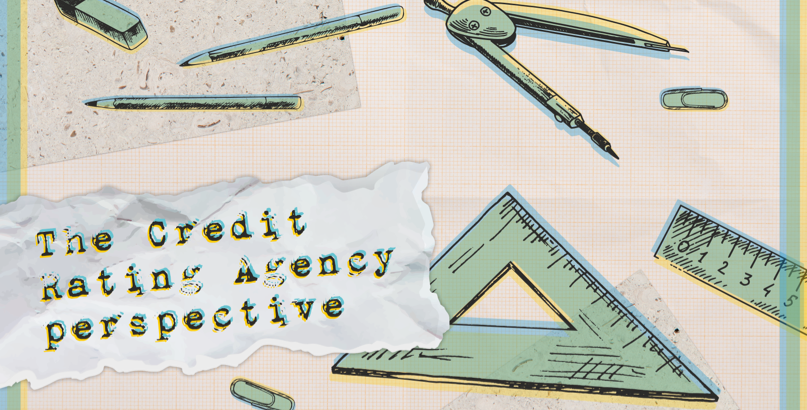Reimagining MDBs: The credit rating agency perspective
MDBs are being tasked to push the boundaries on balance sheet conservativeness, but the level of impact this could have on their triple-A ratings is uncertain. Credit ratings veteran Nikola Swann, Global Head of MDBs & Sovereigns at SwissThink, explains why the triple-A rating is so important to MDBs and what some of the key triggers that could impact it are.

Uxolo: Do MDBs really need to stay AAA?

Nikola Swann (NS): By definition of what they do, MDB exposures are located in developing markets to borrowers that would generally have difficulty getting financing at all or at a reasonable rate. From the get-go, you know these loans are not going to make a lot of money because the whole raison-d’être of the MDBs is to provide their borrowers with cheaper financing than the market would. In fact, the margins on many MDBs portfolios are very small, between 1-2%, so that AAA rating becomes a vital resource for ensuring their access to the cheapest funding possible. The MDBs’ shareholder-governments do not want them to be profit-focussed but they do not want them operating at a loss either.
That is not to say all MDBs have triple A ratings – the Arab Bank for Economic Development in Africa is rated AA by S&P; the Caribbean Development Bank is rated AA+ by Fitch; and the Eastern and Southern African Trade and Development Bank is even rated BB+ by Fitch. On top of that, not all of the biggest MDBs have consistently kept their AAAs – in the 1990s, AfDB was downgraded to AA+ by S&P for various reasons including asset quality, and some institutional issues. They were able to make a number of changes and there was improvement in the performance of some of their borrower countries (helped by the Highly Indebted Poor Countries Debt Relief Initiative (HIPC) in 1996) and so returned back to AAA in the early 2000s.
AfDB did not stop lending when they were downgraded – you can still access cheap funding, if not the cheapest, at an AA+ rating. But in general, the lower your rating, the more your funding costs increase, so the more your ability to lend concessionally will be squeezed.
Uxolo: What are the most likely situations that could trigger an MDB being downgraded from AAA?
NS: Of course, there are all kinds of things that can jeopardise it but, due to the nature of their exposures which are by definition risky, the first place you would expect a problem would be in the performance of those assets.
There might be a client sovereign that is not repaying its loan: for example, EBRD has a lot of exposure right now to the Ukrainian sovereign – currently rated CCC by S&P, implying current vulnerability to default, plus a negative outlook on that rating – but in this case the shareholders have decided they want to do that anyway. This outlines the point that MDBs are not profit-oriented institutions, they are essentially policy instruments. Their main purpose is economic development and other policy goals of their shareholder governments and you have to take that into account when analysing them.
But I will also say that these entities have been designed to be very safe and well-run, and certainly the biggest ones have diversification over a number of different countries, if not regions. For asset quality problems to be big enough that they could risk a downgrade to the MDBs’ rating, we would probably be talking about some kind of multinational crisis. And, for example, even during the Covid-19 pandemic, when MDBs were playing a vital countercyclical role, not one that was AAA at the start of the pandemic had its AAA downgraded.
The Preferred Creditor Treatment (PCT) the MDBs enjoy is also worth a lot for maintaining their operating model with as little excess capital as possible. In essence, the client governments of the world are likely to differentiate between their debt to an MDB in comparison to other lenders because they value the non-financial assistance they get, like technical assistance and advice, and are also aware these institutions tend to be the only people who will keep lending to them in a crisis; the private sector runs at the first sign of trouble.
How much capital you need is significantly influenced by PCT – the track record is that MDB assets tend to perform better than loans made by private sector lenders, even when the same credit is in question – and inasmuch as we were to see a problem develop with this treatment, that could prompt a rating action by itself.
Uxolo: Taking all this into account, is it possible for MDBs to increase their leverage without putting their AAA ratings at risk?
NS: There are a few other routes that have been identified toward getting more for their shareholders’ buck, and some of those are worth considering, but it is true that the very simplest and most obvious is just to leverage more. What you are doing then though is squeezing that capital buffer; your assets are growing as a result of more funding but you are not changing your capital. So the capital % on your balance sheet is shrinking and then the question becomes at what point does that become irresponsible.
Despite this, we would agree with many other observers that there is certainly some room for at least some MDBs to do it – these institutions have been run very conservatively for decades. S&P has a very useful metric for this called the Risk Adjusted Capital (RAC) ratio which it uses to assess private sector banks as well as MDBs. It shows that some MDBs have 25-30% RAC ratios which a developed market private sector bank would never even consider: they do not want to hold that much buffer and no regulator would tell them they need it.
But, MDBs are taking on much riskier borrowers in general, operating in higher-risk geographies, and some of them are not going to have a strongly diversified portfolio (like the Caribbean Development Bank). You might say to yourself, perhaps that means these MDBs with a RAC ratio the high teens do not have much room to leverage up – but with the ones that are 25-30%, and some are even higher, it is hard to believe there is not at least some room. For the larger institutions a small change, even just 1% more leverage, would translate to billions of dollars more going to recipients.
Uxolo: At the Paris Summit for A New Global Financing Pact, you referred to MDBs improving the information they share with the public – how does limited information affect the way MDBs are perceived by the private sector, and what information would improve these dynamics?
NS: One way MDBs could increase their developmental impact would be by providing improved, more frequent, more standardised, and more easily-accessible data, as well as other information to the general public. When you come down to the essential value of MDBs from a the perspective of a potential private-sector partner, and why a bank might want to do a deal with multilateral X, you would point to essentially two MDB advantages vs. the private sector lender: (i) PCT; (ii) the specialised knowledge that X has gained: they have all the local connections, they know which are the safer and riskier exposures, as that is what they do every day, and the MDBs stay involved in their client countries, consistently, over a considerably longer time period than almost any developed market private-sector lender.
There is no question that MDBs could be doing more in terms of providing information to the private sector – I am actually convinced this is one of the major ways private sector investment in the target countries could be generated. As the Capital Adequacy Framework (CAF) Report pointed out, a major asset would be the opening up of the Global Emerging Markets Database (GEMS): a joint initiative between 24 DFIs and MDBs which has collected and aggregated 35 years of asset quality performance data.
The more the investors can see and evaluate data and use it for themselves, the more they will ultimately become familiar with emerging market countries and credits, and the more they will be interested in doing business there. It is the performance data and the comparison between various types of counterparties and the ways target entities interact with investors: perhaps they defaulted on a particular loan – but how long did it take them to repay? Did they repay it in full or was there a negotiated change to the loan agreement? Did they default for internal or external reasons? If you could build up and systematise this information in a way that makes it efficiently accessible, that is when you are going to get a substantial jump in interest from private sector players.





